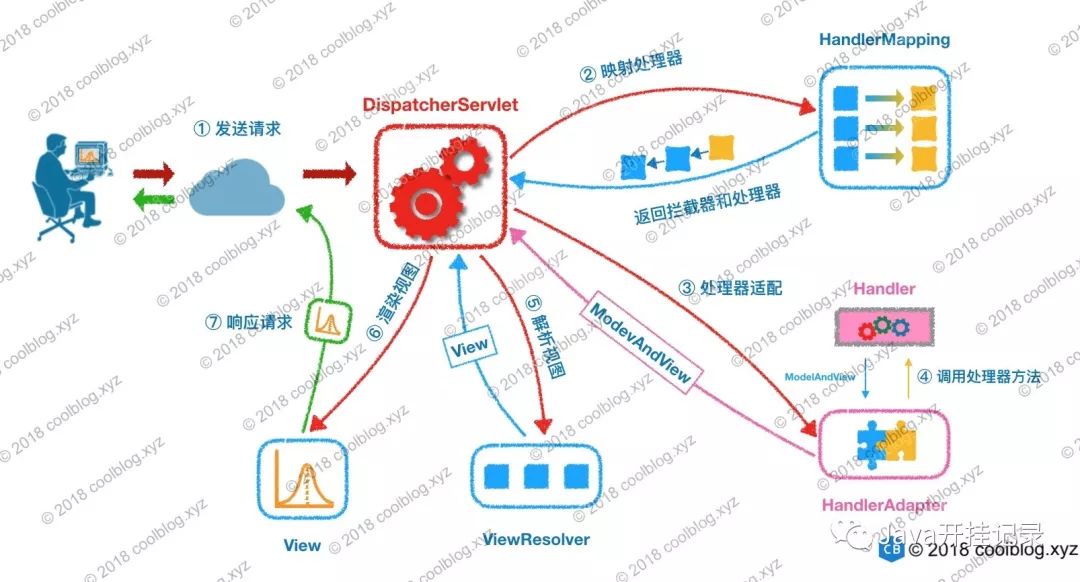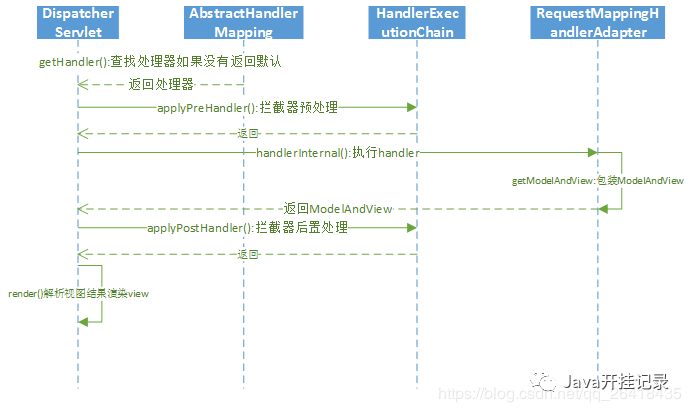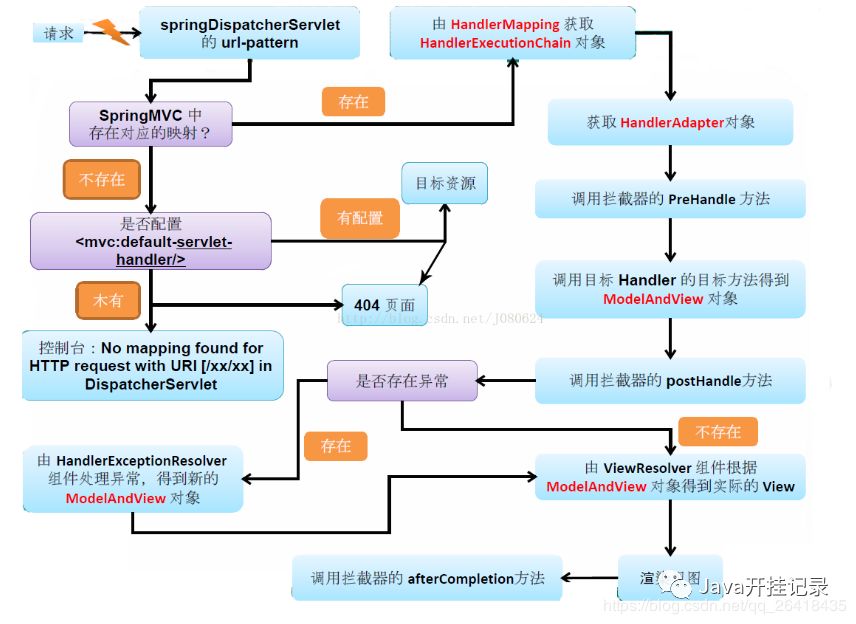本文旨在按照源码理解SpringMVC原理,不深入细节
先看一张大家都熟悉的图,摘自《SpringMVC原理探秘》

再来一个时序图

接下来我们来看具体的实现
org.springframework.web.servlet.DispatcherServlet#doDispatch
protected void doDispatch(HttpServletRequest request, HttpServletResponse response) throws Exception {HttpServletRequest processedRequest = request;HandlerExecutionChain mappedHandler = null;boolean multipartRequestParsed = false;WebAsyncManager asyncManager = WebAsyncUtils.getAsyncManager(request);try {ModelAndView mv = null;Exception dispatchException = null;try {processedRequest = checkMultipart(request);multipartRequestParsed = (processedRequest != request);// Determine handler for the current request.//获取真正执行的HandlermappedHandler = getHandler(processedRequest);if (mappedHandler == null) {noHandlerFound(processedRequest, response);return;}// Determine handler adapter for the current request.//根据handler封装Handler适配器HandlerAdapter ha = getHandlerAdapter(mappedHandler.getHandler());// Process last-modified header, if supported by the handler.String method = request.getMethod();boolean isGet = "GET".equals(method);if (isGet || "HEAD".equals(method)) {//获取最后修改时间long lastModified = ha.getLastModified(request, mappedHandler.getHandler());if (new ServletWebRequest(request, response).checkNotModified(lastModified) && isGet) {return;}}//拦截器前置处理if (!mappedHandler.applyPreHandle(processedRequest, response)) {return;}// Actually invoke the handler.//执行Handler返回ModelAndViewmv = ha.handle(processedRequest, response, mappedHandler.getHandler());if (asyncManager.isConcurrentHandlingStarted()) {return;}//申请默认的视图名称applyDefaultViewName(processedRequest, mv);//拦截器后置处理mappedHandler.applyPostHandle(processedRequest, response, mv);}catch (Exception ex) {dispatchException = ex;}catch (Throwable err) {// As of 4.3, we're processing Errors thrown from handler methods as well,// making them available for @ExceptionHandler methods and other scenarios.dispatchException = new NestedServletException("Handler dispatch failed", err);}//处理结果-解析视图-渲染viewprocessDispatchResult(processedRequest, response, mappedHandler, mv, dispatchException);}catch (Exception ex) {triggerAfterCompletion(processedRequest, response, mappedHandler, ex);}catch (Throwable err) {triggerAfterCompletion(processedRequest, response, mappedHandler,new NestedServletException("Handler processing failed", err));}finally {if (asyncManager.isConcurrentHandlingStarted()) {// Instead of postHandle and afterCompletionif (mappedHandler != null) {mappedHandler.applyAfterConcurrentHandlingStarted(processedRequest, response);}}else {// Clean up any resources used by a multipart request.if (multipartRequestParsed) {cleanupMultipart(processedRequest);}}}}复制
解释:
获取真正执行的Handler,封装Handler适配器
applyPreHandler()调用Handler前进行拦截器前置处理
handler()执行Handler并返回ModelAndView(调用我们写的Controller)
applyPostHandler()拦截器后置处理
processDispanchResult()处理结果:解析视图、渲染view
思路很清晰
再来一张截图,摘自《SpringMVC - 运行流程图及原理分析》

文章转载自鲁班同学,如果涉嫌侵权,请发送邮件至:contact@modb.pro进行举报,并提供相关证据,一经查实,墨天轮将立刻删除相关内容。






